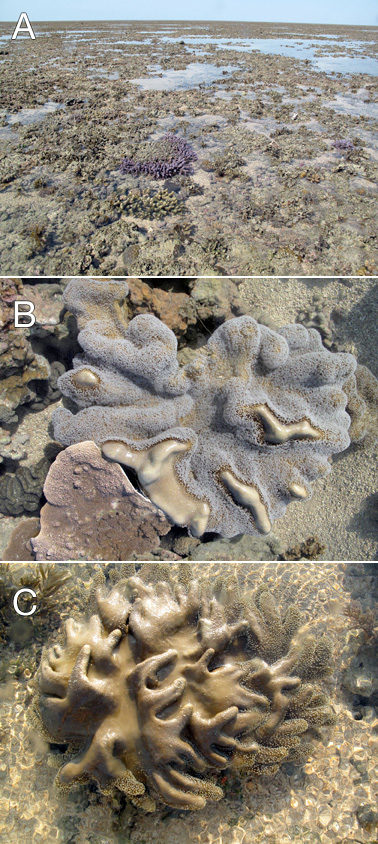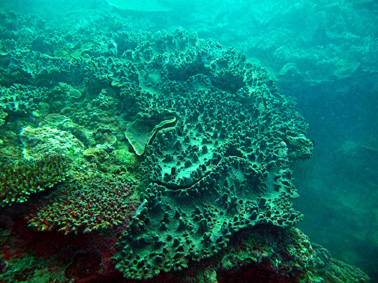Researchers' Diaries
Dr Monika Schlacher
Marine Zoologist, Sessile Marine Invertebrate Section, Queensland Museum
Dr Monika Schlacher, Marine Zoologist, Sessile Marine Invertebrate Section, Queensland Museum
OCTOCORALLIA (SOFT CORALS and SEA FANS):
Two weeks on the Kimberley Quest in Western Australia has come and gone.
This was the Qld Museum’s first trip to the Kimberley region, providing me with my first chance to collect soft coral samples from these reefs. It was also my first opportunity to discover any possible new species, as in this remote region there is still so much left to discover and describe.
As an octocoral taxonomist, I was on board the Kimberley Quest as part of a team of museum scientists, which included a network of researchers engaged in a long term initiative to assess and explain the diversity, distribution, and abundance of marine life in the oceans. In this position, the Qld Museum aims to comprehensively document the tropical Octocorallia fauna of the Australian east and west coasts. To date, about 800 specimens from the Great Barrier Reef on the east coast have been collected, but prior to this study the understanding of the Western Australian soft coral fauna had been long neglected and scientific understanding in the Kimberley region was rudimentary.
In the Adele region ten visual surveys were undertaken using SCUBA as well as two intertidal surveys, while in the Montgomery region twelve intertidal transects were investigated. Each survey consisted of four 5 m long transects and an investigation time of 50 min. Species richness and biodiversity were clearly lower on this side of the Australian continent than on the east coast, with a total of only 85 soft coral specimens from 37 species recorded during this trip. Changes in both abundance and diversity were noted between the more remote Adele Island region and the inshore Montgomery Reef. This could be partly explained by the different methods used at the different locations, but is most likely due to the different exposure times for the animals.
Approximately 70 % of all species were collected in the Adele region, whereas only 30 % came from the Montgomery region. The harsh conditions on the later reef, due to the long exposure times to sun and air, are related to the high tide levels of up to 12 metres. This provides an extreme environment for octocorals and would relate to the low biodiversity. Only a few, but very well adapted species, such as big colonies of Sarcophyton and Sinularia can survive (Fig. 1. A-C). Other species found were cryptic (Xenia sp.) or encrusting animals (Tubipora sp.) hiding under little outcrops and boulders. Nevertheless, it appears that the big colonies of soft corals are very abundant on the edges of the exposed reefs, and therefore are important habitats for other invertebrates and small fish.
Adele reef was clearly more diverse, but was also strongly dominated by three genera (Lobophytum, Sarcophyton, and Sinularia) growing in massive colonies, most likely favoured by the high turbidity in these waters (Fig. 2). Somewhat astonishing was the lack of large sea fans and sea whips, which could have been expected in a high current environment.
More detailed laboratory examination of the specimens is necessary before the final identifications can be confirmed, but the first results underpin the belief that the west coast of Australia harbours a unique octocoral fauna. Clearly, further scientific investigation on the biodiversity of the region would enhance our understanding of these unique environments.

- Fig. 1. A. Intertidal reef flat in the Montgomery region; B, C. 2 different species of Sarcophyton.
- Species of Sarcophyton and intertidal reef.
- Photo by Monika Schlacher
- Copyright Western Australian Museum.

- Fig. 2. Large and slow-growing Sinularia colony from Adele Reef in the Kimberley region.
- Sinularia colony
- Photo by Monika Schlacher
- Copyright Western Australian Museum.












